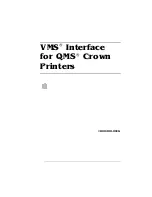
10
Note that all implementation instructions in the rest of the document apply to JS12, JS22,
JS23, JS43, PS700, PS701 and PS702 unless explicitly stated otherwise.
1.1.8. Logical Partitioning (LPAR)
Like other Power systems, Power blades can be partitioned into separate environments, or logical
partitions (LPARs). Power blades support IBM i, AIX and Linux partitions. Any physical hardware
the blade has access to is owned by a Virtual I/O Server (VIOS) LPAR, which virtualizes storage,
optical and network resources to the other LPARs. An IBM i LPAR on the blade does not have
direct access to any physical hardware on the blade or outside the BladeCenter chassis. IBM i is
a client to VIOS, using a Virtual SCSI (VSCSI) connection in the Hypervisor firmware residing on
the SP.
VIOS is always the first LPAR installed on a partitioned Power blade. Once VIOS is installed,
other LPARs can be created using the Integrated Virtualization Manager (IVM). IVM is part of
VIOS and provides a browser interface to the blade for managing LPARs and I/O virtualization.
The Power blade does not support a Hardware Management Console (HMC).
1.1.9. Overview of I/O concepts for IBM i on blade
IBM i LPARs on a Power blade can use Fibre Channel or SAS storage.
The type of storage
used is determined by the I/O modules available in the BladeCenter chassis and the I/O
expansion adapters present on the blade, and not by the blade machine type and model
.
All POWER6™ and POWER7™ processor-based blades are capable of connecting to both Fibre
Channel or SAS storage. The JS23, JS43, PS700, PS701 and PS702 would use one of several
CIOv adapters and/or the QLogic CFFh Fibre Channel/Ethernet adapter to connect to Fibre
Channel storage; they would use the CIOv SAS passthrough adapter to connect to SAS storage.
The JS12 and JS22 would use the QLogic CFFh Fibre Channel/Ethernet adapter to connect to











































